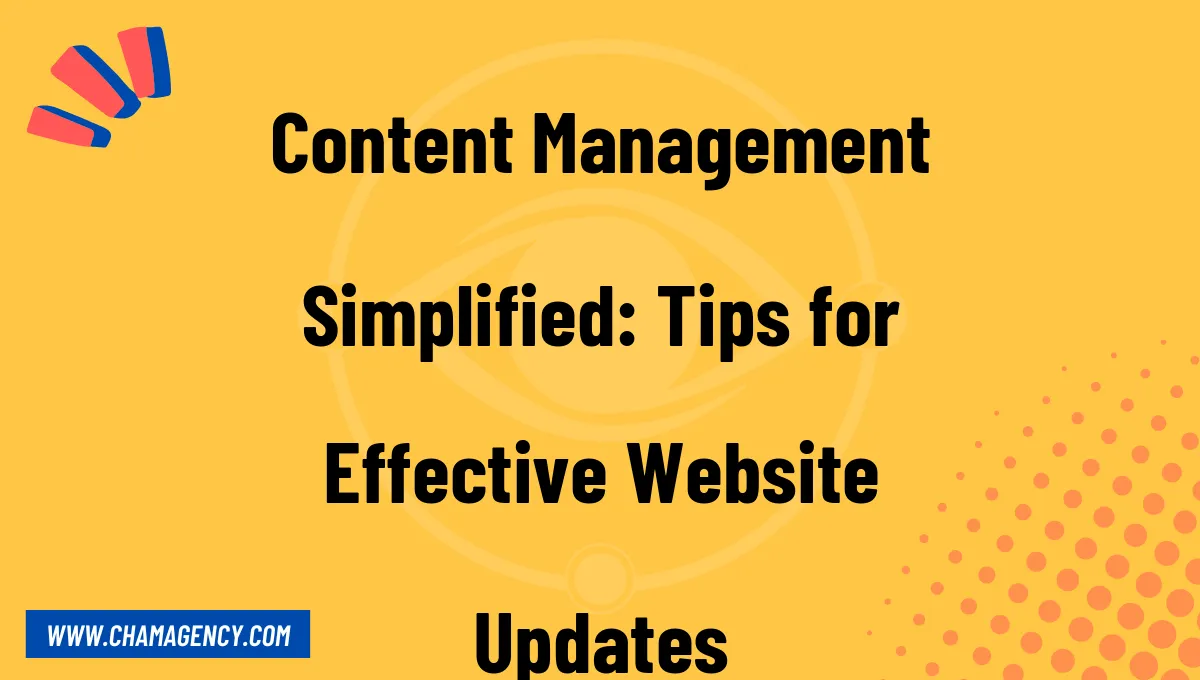In today’s dynamic digital landscape, regularly updating your website content is crucial for maintaining relevance, driving traffic, and engaging your audience. However, managing these updates can seem overwhelming without the right approach and tools. In this article, we’ll delve into some essential tips to simplify the process of content management and make your website updates more effective.
1. Plan and Prioritize
Before diving into website updates, it’s essential to create a solid plan and establish priorities. Start by defining your goals and determining the areas of your website that require immediate attention. Categorize your updates based on importance, urgency, and impact. This helps ensure that your efforts are focused on the most significant aspects that align with your overall objectives.
Once you have a clear roadmap, break down your updates into smaller tasks and assign them to appropriate team members. This approach ensures accountability and streamlines the process, ultimately leading to more effective content management.
2. Maintain Consistency
Consistency in website updates is vital for creating a positive user experience. Along with regular content updates, focus on maintaining visual consistency in design elements, typography, and overall style. This consistency helps users navigate your website with ease and builds trust and credibility.
Consider creating style guides and templates that define the visual guidelines for different page types. These guides can include color schemes, font choices, image styles, and other design elements. By adhering to these guidelines during updates, you ensure a cohesive and professional appearance throughout your website.
3. Utilize a Content Management System (CMS)
A robust content management system (CMS) simplifies the process of website updates by providing a user-friendly interface and powerful tools. Popular CMS platforms, such as WordPress, allow you to manage and update your website content without requiring extensive technical knowledge.
With a CMS, you can easily create new webpages, update existing content, add images, embed videos, and more. These systems often provide intuitive editing options like WYSIWYG (What You See Is What You Get) editors, making it straightforward to format and style your content. Additionally, CMS platforms offer plugins and extensions that enhance functionality and improve SEO optimization.
4. Optimize for Search Engines
Effective website updates should consider search engine optimization (SEO) techniques to improve visibility in search results. Incorporate relevant keywords strategically within your content and meta tags to enhance your website’s ranking.
Focus on creating high-quality, original content that serves the needs of your target audience. This content should be informative, engaging, and easy to consume. Including descriptive headings (H1, H2, H3, etc.) and organizing your content into logical sections helps search engines understand your website’s structure and relevance.
5. Engage Your Audience
While making website updates, it’s crucial to keep your audience engaged and interested. Write in a conversational style, using an informal tone and personal pronouns, to establish a connection with your readers. Keep your language simple, avoiding jargon or complex terminology that may confuse or alienate your audience.
Utilize active voice, as it enhances readability and creates a sense of direct engagement. Use rhetorical questions to encourage readers’ active participation and prompt them to think about the topic at hand. Incorporate analogies and metaphors to make complex concepts more relatable and easily understandable.
Conclusion
In conclusion, effective website updates play a crucial role in maintaining a relevant and engaging online presence. By planning and prioritizing, maintaining consistency, utilizing a content management system, optimizing for search engines, and engaging your audience, you can simplify the content management process and achieve more impactful website updates.









